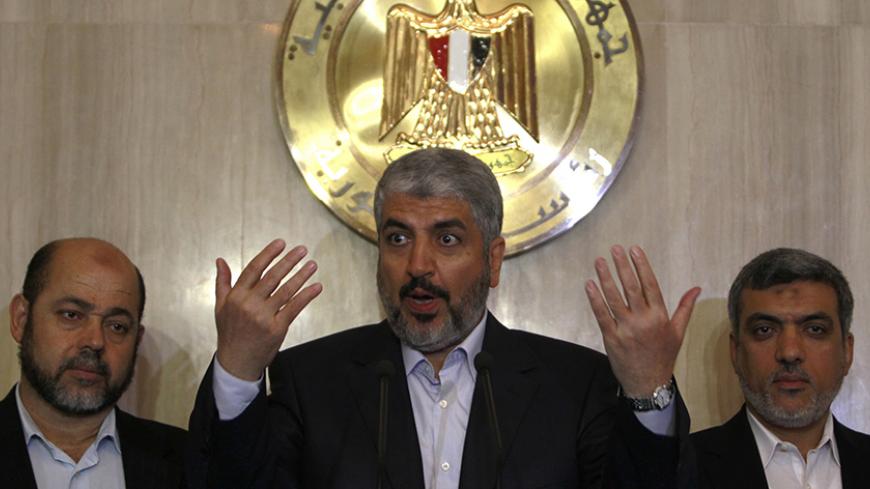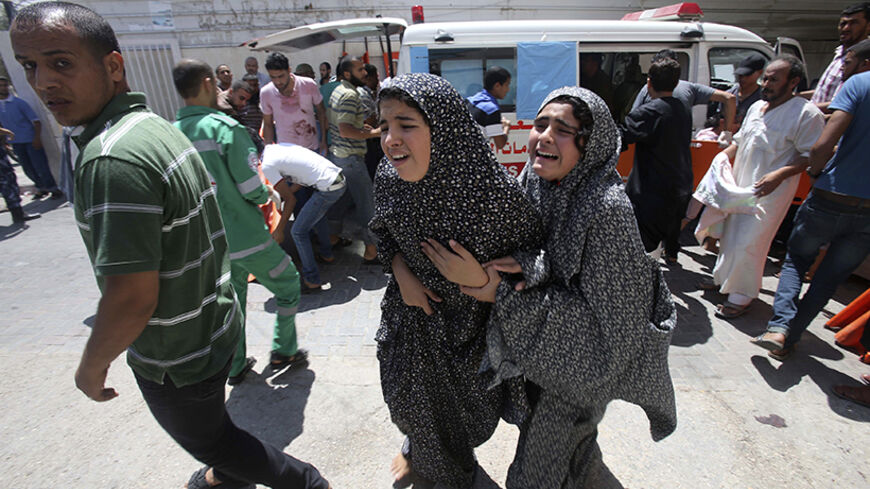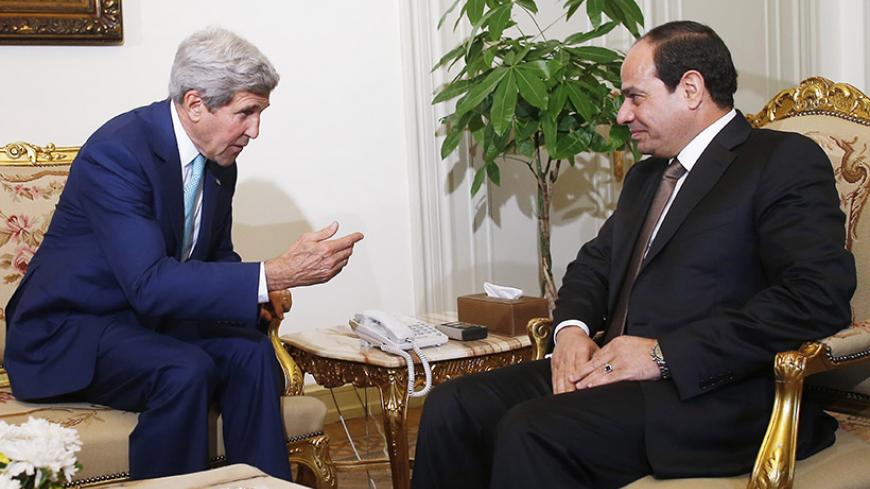Hamas finds itself between a rock and a hard place
Hamas seems likely to accept Egypt’s demand that it sever ties with the Egyptian Muslim Brotherhood, even though the relationship formed the basis for its ideology.

The leaders of Hamas never imagined that they would be pushed up against the wall like this. With Egypt holding a gun to their heads, they know that if they want to keep the movement alive, they must accept Egypt's ultimatum and sever ties with the Muslim Brotherhood. It could be the toughest decision that Hamas has been forced to make since it was first founded in December 1987.
It is well-known that the founder of Hamas, Sheikh Ahmed Yassin, was inspired by the Muslim Brotherhood while he was a student at Ain Shams University in Egypt. He adopted and adapted that group’s teachings to meet his own ideology and turned Hamas into a mass movement of the poor and disenfranchised members of Palestinian society.








